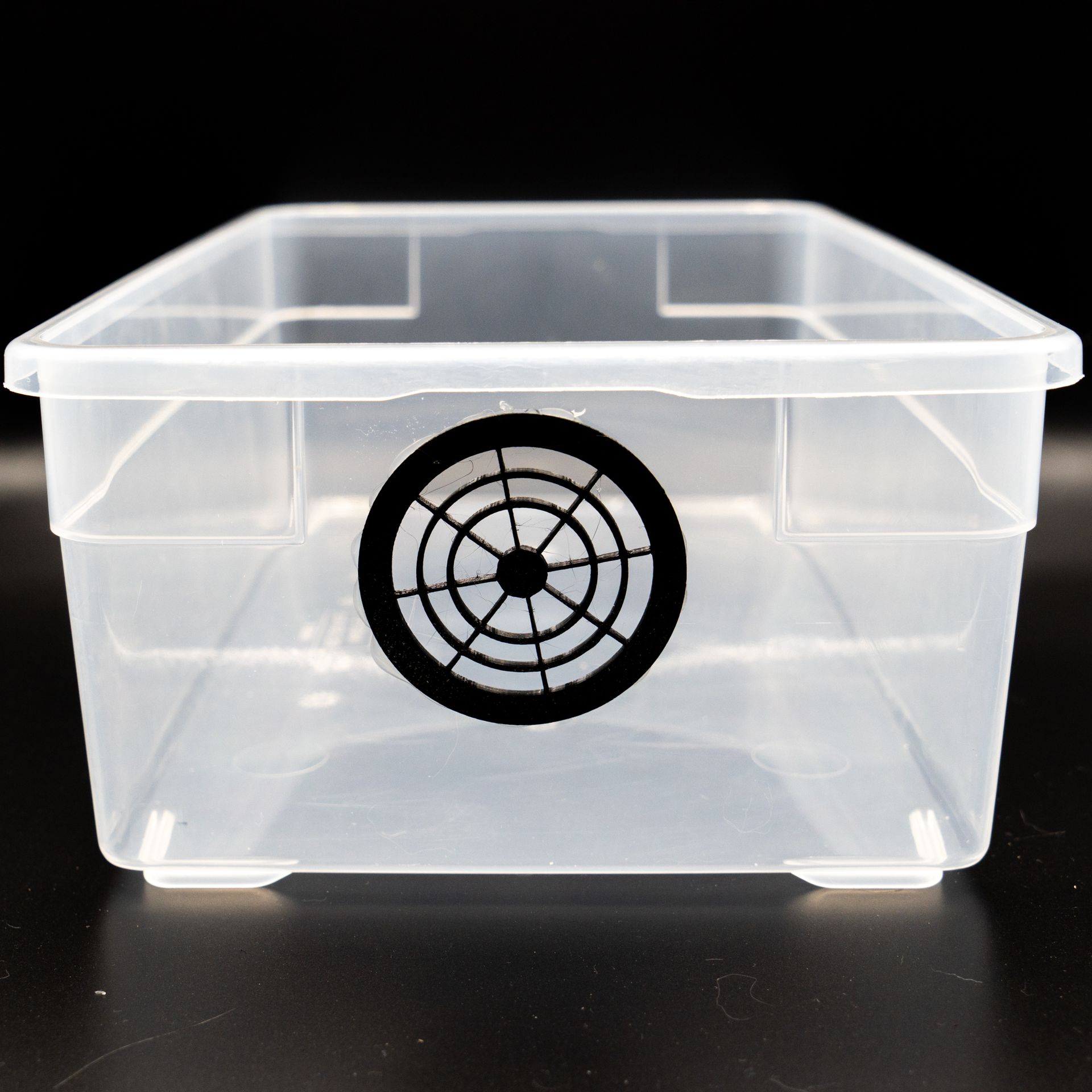
We’ve talked a bit about our favorite hatchling bins before, but we’ve never gone into detail about how we set up our bins specifically! If you haven’t read through our Crested Gecko Care guide before and are looking to bring home your first buddy, we recommend you start there! Although the differences between the bins for the New Caledonian species are minimal, we’ll still have a different guide for each one so it doesn’t get confusing. Setting up a proper crested gecko hatchling enclosure is crucial for their well-being and growth, and we’ve tested a lot of methods to find our best combination. If you’re looking for more information about Enclosures and caging specifically, check out our Enclosure guide! Here’s a step-by-step guide to help you get started on setting up your Gecko Hatchling Bin:
- Prep the Enclosure: For hatchlings, a smaller enclosure is suitable to prevent them from feeling overwhelmed. This unfortunately means that ventilation can be a bit tricky, you want to make sure that any vents aren’t so big that a gecko can slip through but you also want to ensure enough airflow. We recommend either five to six holes approximately 1/4 inch in diameter on each side of the bin or installing a vent like the ones we offer in our shop.
- IMPORTANT NOTE: If you purchase a hatchling bin directly from us, you can skip this step! All of our bins come preinstalled with our hatchling safe vents.

- IMPORTANT NOTE: If you purchase a hatchling bin directly from us, you can skip this step! All of our bins come preinstalled with our hatchling safe vents.
-
Add Substrate: Use a soft and safe substrate like paper towels, coconut coir, or reptile carpet. Avoid loose substrates like sand or wood chips, as hatchlings may accidentally ingest them. For our geckos, we prefer paper towels over alternative options for general safety to avoid impaction and prevent mold. We have found issues with reptile carpet retaining excess water and molding in response, although there are some individuals who have never had this problem and love it!
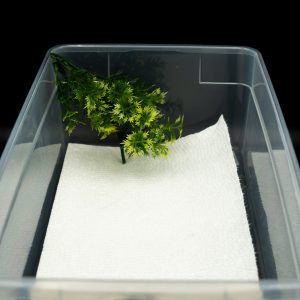
-
Add Foliage: Our hatchlings love to hide in and around plastic plants. They even make great water holding surfaces for them to drink off of! We’ve found that nestling in the back of the tubs increases their comfort with hiding in and using the plants, so we always place them there!
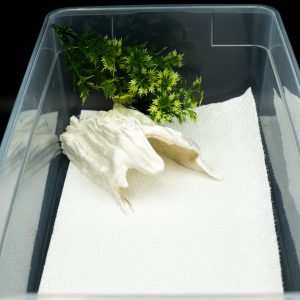
-
Offer Hideouts: Hatchlings need hiding spots to feel secure. You can use artificial caves, half-coconut shells, or commercial reptile hides. We offer a couple of hide options in our shop in a variety of colors and finishes, so you can choose ones that fit your style directly from us!
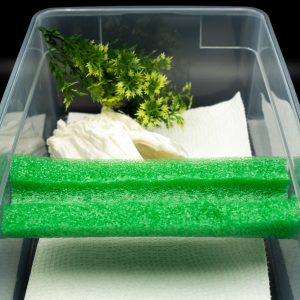
-
Add Climbing Opportunities: Crested geckos are arboreal, meaning they spend a lot of time climbing. You’ll want to provide climbing options for them to explore. For our hatchling bins, we like to include a pool noodle insert that has been cut in half! We’ve experimented with a variety of options and found this setup results in the healthiest eaters and best growth rates. Cork bark or reptile-safe branches work well too!
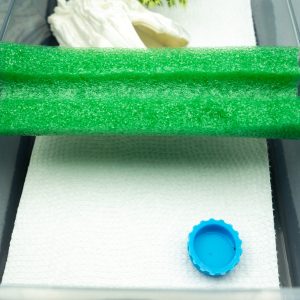
-
Insert Water Dish: Place a shallow, easy-to-access water dish with fresh water in the enclosure. You’ll want to make sure that your hatchling can’t accidentally drown in it. We like bottle caps, whether plastic or silicone! They’re really the perfect size and so easy to clean and reuse without having to worry about water depth.
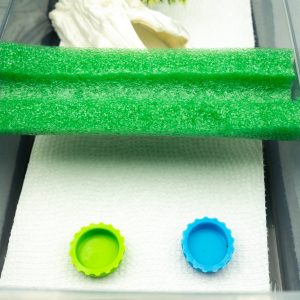
- Add Feeding Dish: For our feeding dishes, we like to use the same kind of dishes as our water dishes! Either a silicone or plastic bottle cap provides our hatchlings with more than enough food and are incredibly easy to clean.
- IMPORTANT NOTE: Some geckos prefer to eat off of the ground, while others prefer to eat directly on the bottom of their enclosures. If you find your hatchling struggling one way or the other, swap up how you have their food positioned!
- IMPORTANT NOTE: Some geckos prefer to eat off of the ground, while others prefer to eat directly on the bottom of their enclosures. If you find your hatchling struggling one way or the other, swap up how you have their food positioned!
Remember that crested geckos are generally quite hardy, but their environment plays a vital role in their well-being. Providing a suitable habitat will help ensure that you have one happy and healthy gecko.